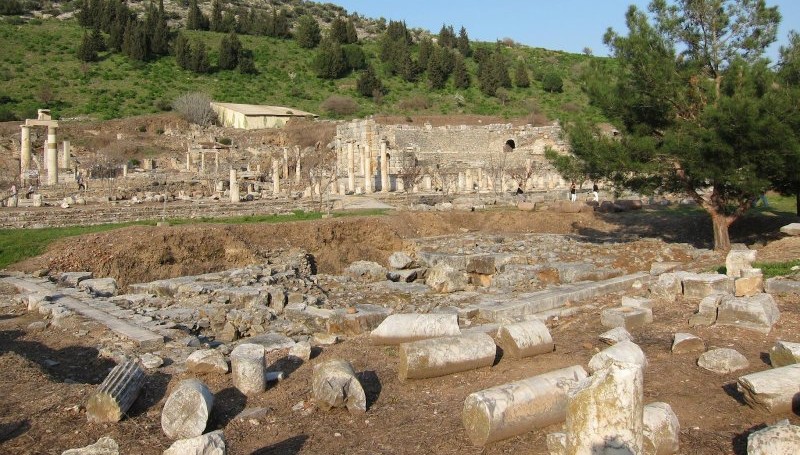Efes Agora
An agora in ancient times was an open space where people could gather (agoraphobia is the fear of open spaces). Agora were used for meetings and for markets. Ephesus had two agorae: the State or Political Agora was the meeting place for governmental discussions, built by the Romans in the first century BC to the south of the Basilica; the Commercial Agora was a market place.
The State Agora measured 160 x 73 metres and had stoas (roofed one-walled walkways, providing shelter from sun and wind) on three sides and a temple dedicated to Isis, dating from the first century AD, in the middle. The temple was built of pink Egyptian marble and had ten columns on the long side and six on the short. It collapsed in the reign of Augustus and, because of his dislike of all things Egyptian, was not rebuilt. Statues from the facade of the temple are now on display in the Ephesus Museum in Selcuk.
The north east corner of the Agora was built above an old necropolis where many 6th and 7th century BC graves, a terra cotta sarcophagus and a stone paved road have been excavated. The necropolis was moved to outside the city walls by the Romans, because it deterred people from settling in the city.
To the side of the Agora was a cistern or water reservoir. Water was carried to the city by the Pollio Aqueduct, some remains of which can be seen alongside the Selçuk to Aydın Road some five kilometres away. Clay pipes, used to distribute the water, are also to be seen. They had a locking system and were sealed with a mortar of clay, marble dust and egg white. The Romans used lead pipes for internal plumbing; indeed our words "plumbing" and "plumber" are derived from "plumbum" the Latin word for "lead".

